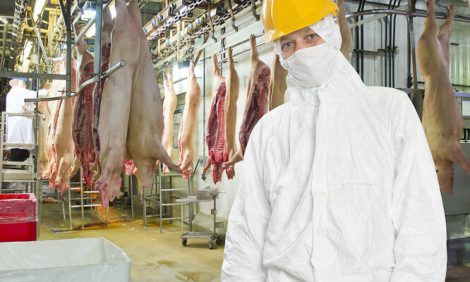



Weekly Overview: Estimating the Cost of Antibiotic Resistance
GLOBAL - A group of experts is calling for a worldwide ban on the use of one class of antibiotic in farm livestock after estimating the human impact of antibiotic resistance to these drugs in just one pathogen in Europe, describing the cost as "staggering". Highly pathogenic bird flu has re-emerged in India and Nepal, while the low-pathogenic form has been found in the Netherlands and Taiwan. A Mexican vet estimates that the cost to the poultry industry is greater for the low-pathogenic form in his country than the recent highly pathogenic outbreaks.Experts have this week described the number of avoidable human deaths and the costs of health care potentially caused by antibiotic use in food animals as "staggering" and are calling for a global ban on their use, singling out poultry hatcheries.
In a letter to Emerging Infectious Diseases, a multinational and multi-disciplinary group of experts says: "The number of avoidable deaths and the costs of health care potentially caused by third-generation cephalosporin use in food animals is staggering. Considering those factors, the ongoing use of these antimicrobial drugs in mass therapy and prophylaxis should be urgently examined and stopped, particularly in poultry, not only in Europe, but worldwide."
Globally, the authors explain that antimicrobial drug resistance is rapidly rising, with resultant increased illness and death. Of particular concern is Escherichia coli, the most common bacterium to cause invasive disease in humans.
Extrapolating from recent Dutch data to the whole of Europe, they estimate that 1,518 additional deaths and an associated increase of 67,236 days of hospital admissions from antibiotic-resistant E.coli would be counted as a result of cephalosporin and other antimicrobial drug use in poultry.
Billions of chickens receive third-generation cephalosporins in-ovo or as day-old chicks to treat E.coli infection, they say, a practice that has resulted in large reservoirs of resistant bacteria.
In the US, a veterinarian from the University of Kentucky has offered an explanation of the new guidelines on antibiotic use for livestock producers.
With proper use, antibiotic medications can keep animals healthy, control the spread of disease, help animals gain weight and also prevent diseases that could spread to humans. Recent concerns that the overuse or misuse of antibiotics could lead to an increase in antibiotic resistance have prompted the US Food and Drug Administration to implement a new strategy that will impact livestock producers, aimed to encourage the judicious use of antibiotics in food-producing animals.
In an overview of the current economic situation in the US poultry industry presented at a recent conference in Chicago, Mike Donohue of AgriStats highlighted the rapid progress made in broiler growing in the years he has been involved with the industry, including improved feed efficiency and meeting consumer expectations.
He highlighted ways in which managers can mitigate some of the consequences of reducing the use of medications in feed, including longer down-time between flocks, lower stocking densities and greater use of coccidiosis vaccines.
Also in the news this week, the world's first artificially produced meat was unveiled as a Cultured Beef-burger, re-igniting the debate over the sustainability of livestock production and the ability of the agricultural sector to feed a growing global population.
The World Trade Organization (WTO) issued a panel report on Chinese measures against US broiler products, which supported the case brought by the US.
And finally, turning to Bird Flu news, two outbreaks of H5N1 highly pathogenic avian influenza have been reported in central India. There have also been further cases in Nepal. Low-pathogenic avian flu has been found in Taiwan and in the Netherlands. For the first time, there is evidence that the H7N9 flu virus in China may have been transmitted from one person to another.
A Mexican veterinarian has suggested that the low-pathogenic virus that has become endemic in his country over the last 18 years has cost much more to the poultry industry than the more recent highly pathogenic form.








